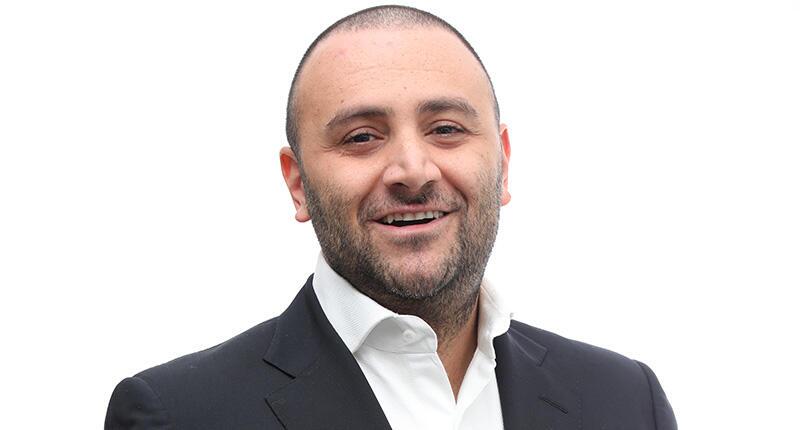Squirrel Spotting: Life After Rolex
Peter Smith shares advice from independent jewelers who used losing this cornerstone brand as a catalyst for reinvention.

As quietly as is feasible under the circumstances, some long-standing authorized Rolex dealers appear to be receiving the dreaded “Dear John” letters signaling the Crown’s intent to end their relationship at a level I have not witnessed before.
The historical justifications (explicit or otherwise) that drove previous separations—not following the rules, misrepresenting the brand, unwanted creative pricing, transshipping, etc.—seem to have given way to something decidedly less tangible, less actionable, and that appears, to the untrained eye, to be your store’s address.
Based on a random group of retailers who recently have been notified of Rolex’s intent to end their relationship, it seems to matter not a whit what a given retailer’s Rolex sales are, how committed they are to the brand, how impressive their Rolex environment is, how long they have carried the brand, or how ambitious their Rolex aspirations might be.
If your castle is built on the wrong hill, there just might be cause for concern.
For many current Rolex retailers, those in A markets, those with Rolex stores (distinct from Rolex environments inside their jewelry stores), those with neighboring stores named Chanel, Gucci, Louis Vuitton, etc., there should be no lost sleep.
For others, however—especially those in B markets—they might want to pay attention to what is happening with recently closed Rolex retailers, and they might want to prepare a Plan B, just in case the unthinkable happens.
Being prepared with a “what if” has nothing but upside.
If you don’t get that letter, the impact of preparing for that scenario is that you will have improved an element of your business while continuing to execute your Rolex story.
If, however, you do get the dreaded communication, your pre-emptive initiatives will help to mitigate a huge transition in your business.
While there is no ready substitute for Rolex, there are other brands (and I don’t mean just timepieces) that can help your store recover the lost Rolex business.
An important consideration is that you don’t have to replace the Rolex sales, you need to replace the lost gross-margin dollars.
If you are looking to replace $3 million in Rolex sales, that becomes (assuming a 35 percent margin) a $1.05 million gross margin challenge.
Again, not nothing, but a good deal more palatable than thinking about the loss as a $3 million hit.
I spoke to a few retailers to understand the experience of losing Rolex and how they moved on from it.
It’s a great lesson for any retailer facing the threat of, or dealing with the fallout from, the unexpected exit of a key vendor that brought them a lot of publicity, foot traffic, and sales.
One of the things that stood out in my conversations with retailers was their absolute disbelief when the letter arrived. According to them, there had been no warnings, no inklings at all of what was to happen.
These retailers, I should point out, were not amongst the most recent closures (those wounds are too raw), but their recollection and shock at what happened still resonates.
Brad Hart from Hauser’s Jewelers in Newport News, Virginia, said, “Amy and I had a post-Christmas getaway, and we were talking about how proud we were about our Rolex sales.
“Two weeks later, we got the letter. It was a gut-punch. We’d been an authorized dealer since 1977, and it was such an important part of our identity. They’d even told us that it was an honor for them to be in a family business like ours.”
Natasha Henderson from Saxon’s Fine Jewelers in Bend, Oregon, said, “We had absolutely no idea. In fact, we had been in discussions with our Rolex rep and taking his lead on a planned Rolex remodel. We did everything they asked of us and never gave them any reason to be concerned about how we represented the brand.”
Armando Gonzalez from Blue Marlin Jewelry in Islamorada, Florida, said: “We had just put the new Rolex environment in three or four years previously. We followed every rule to a ‘T’ and represented the brand well. Then one day I got an email from a private server telling me that we were losing the brand.
“I thought it was some kind of bad joke, but when I followed up with Rolex they confirmed that it was true. I’m a small store and what they did almost put me out of business. Heck, they had just invited me to a training in February, and then I got the letter in April.”
It is a matter of conjecture as to why these retailers, or any of the more recent Rolex closures are getting shut down, but overexposure for the brand was likely not one of the reasons.
Saxon’s was a two-and-a-half-hour drive from the next Rolex dealer. Blue Marlin was a hard 60 miles (Southeast Florida!) from the next closest dealer, and Hauser’s, on the southeastern end of the Virginia Peninsula, was a solid hour from their nearest Rolex competitor.
Henderson said she was sick to her stomach when she opened the letter.
“I’m second generation, and my first thought was how am I going to break the news to my parents and to Bruce, our founders. It was our goal to have Rolex to help put us on the map, and now we were going to have to reinvent ourselves on the fly. I had a pity party for about a week, and then I got down to the hard business of what needed to be done.
“We got ahead of things by contacting our customers before they heard the news elsewhere. We started looking at other brands that could step into the vacuum and replace those gross margin dollars, and we recalibrated our team to focus on increasing our average ticket and creating a culture on add-on sales.”
Brad Hart said he didn’t want Hauser’s to be known as the store that lost Rolex.
“We had a meeting with our team, and we literally set about reinventing the store. We focused on higher-margin products.
“You know, there’s a certain freedom that comes with being able to chart your own growth, absent the dictates that were such a part of that relationship.”
Gonzalez said, “We reached out to other vendors, brought in another watch brand, and we continued to do the very best we could do for our customers. It wasn’t something we expected or welcomed, but it wasn’t going to define us.”
Losing Rolex was not on the agenda of things you’d expect to happen for any of these retailers, but once it happened, they used it as a catalyst for reinvention.
As Natasha offered, “We had survived the recession of 2008, we had weathered those early uncertain weeks and months of COVID, and we got through this, too, with our business continuing to grow, and more profitable than ever before.
“That said, we could really have used hearing from someone that this could happen.”
As Armando said, “If you have Rolex, count your blessings, but know that it could end on a whim.”
Happy retailing!
The Latest

Articles about crime, engagement rings, and a necklace worn in the World Series generated the most interest among readers.

As part of the leadership transition, Sherry Smith will take on the role of vice president of coaching strategy and development.

It marks the third time the country has headed the Kimberley Process. Ghana will serve as vice chair.

How Jewelers of America’s 20 Under 40 are leading to ensure a brighter future for the jewelry industry.

The new Bulova x Stetson designs highlight two animals often associated with the American West—the bison and the Texas Longhorn.


Its residency at Yamron Jewelers will run through May 2026.

From influential executives to innovative designers, we pay tribute to the people we said goodbye to this year.

Roseco’s 704-page catalog showcases new lab-grown diamonds, findings, tools & more—available in print or interactive digital editions.

The retailer is expanding into areas with large Indian and South Asian populations.

The Italian brand has opened its first flagship amid the peaks of the Dolomites in Madonna di Campiglio, Italy.

The new curation at the Natural History Museum of Los Angeles County showcases rare gem and mineral specimens in their uncut, natural state.

The couple pleaded guilty to concealing at least $127 million in cash transactions at its precious metals businesses.

Consumers shared concerns about prices, inflation, tariffs, trade, and politics in the survey’s write-in response section.

In February 2026, the auction house will move its headquarters to the former Steinway Hall, a neoclassical landmark on Billionaires’ Row.

The new show will take place Jan. 23-25, 2026.

The former BHP Billiton leader and Gemfields chairman is remembered for his influential leadership throughout his 50-year mining career.

The LVMH-owned brand has partnered with the costume design union to revamp its award for 2026.

The luxury titan inked a deal to acquire an initial minority stake in the jewelry manufacturer with a pathway to full ownership by 2032.

The company’s curation of unsigned vintage and estate jewelry debuted at the Bloomingdale’s in Costa Mesa, California.

In the recent multi-shipment seizure, CBP also found counterfeit Audemars Piguet, Moncler, and Chrome Hearts items.

Helzberg’s Chief Retail Officer Mitch Maggart shared details about its tests of a new store concept rooted in an elevated luxury experience.

Jewelers of America execs and National Jeweler editors discuss tariffs, the sky-high gold price, and the engagement that broke the internet.

The luxury goods company said founder Ippolita Rostagno will remain at the brand’s helm.

Laura Burdese, who joined the Italian luxury brand in 2022, will take on the role in July.

The National Jeweler editors revisit the most noteworthy industry happenings and design trends from 2025.

Need a gift for the cat lover who has everything? Look no further than our latest Piece of the Week.

It purchased the “Grosse Pièce,” an ultra-complicated Audemars Piguet pocket watch from the ‘20s, for a record-breaking price at Sotheby’s.






























